Fatu Hiva – Last Stop in the Marquesas
In the last post from this Adventures Abroad tour of French Polynesia we visited the scared marae of I’lpona on the island of Hiva Oa. In this post we will head for our final destination in the Marquesas, Fatu Hiva where we will have two stops, first at Omoa and then at Hanavave. Those so inclined can attempt the ten mile (16 km.) trail that connects the two villages. Please join us as Alison and I contemplate whether or not to undertake this rather daunting trek.
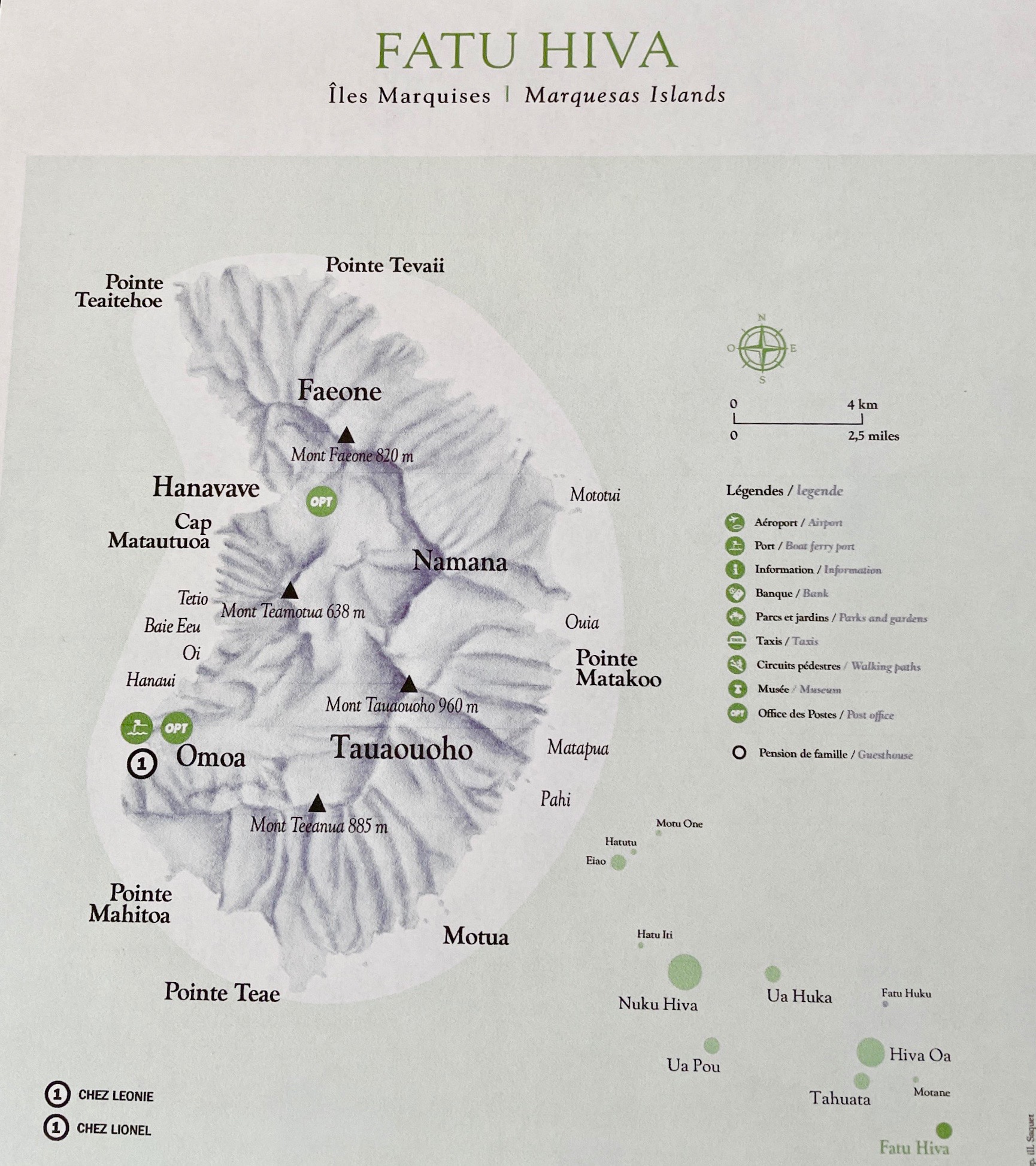
Fatu Hiva is the southernmost of the Marquesas Islands and technically the most remote from any of the other islands of this archipelago, although it is only 77 kms. (48 miles) from Tahuata. Today it has a population of just over six hundred souls, but at one time had many times this number. Prior to European meddling, tribal rivalries led to the inhabitants of Omoa being displaced by those from Hanavave and fleeing all the way to the Tuamotu archipelago where their descendants live today. Once the missionaries arrived the usual disease decimation set in combined with the extermination of the ‘pagan’ Fatu Hiva culture, but here it was not entirely successful as the people of the island are known for their expertise in making tapas. These are not Spanish small plates, but rather a type of bark cloth upon which elaborate designs are created. Tapas from Fatu Hiva are among the most authentic souvenirs one can purchase in the Marquesas and we are going to get an opportunity not only to buy them, but see how they are made.
Omoa
We go ashore by barge at our first stop on Fatu Hiva, the small village of Omoa. There is a nice tohua with modern tikis right on the shoreline.
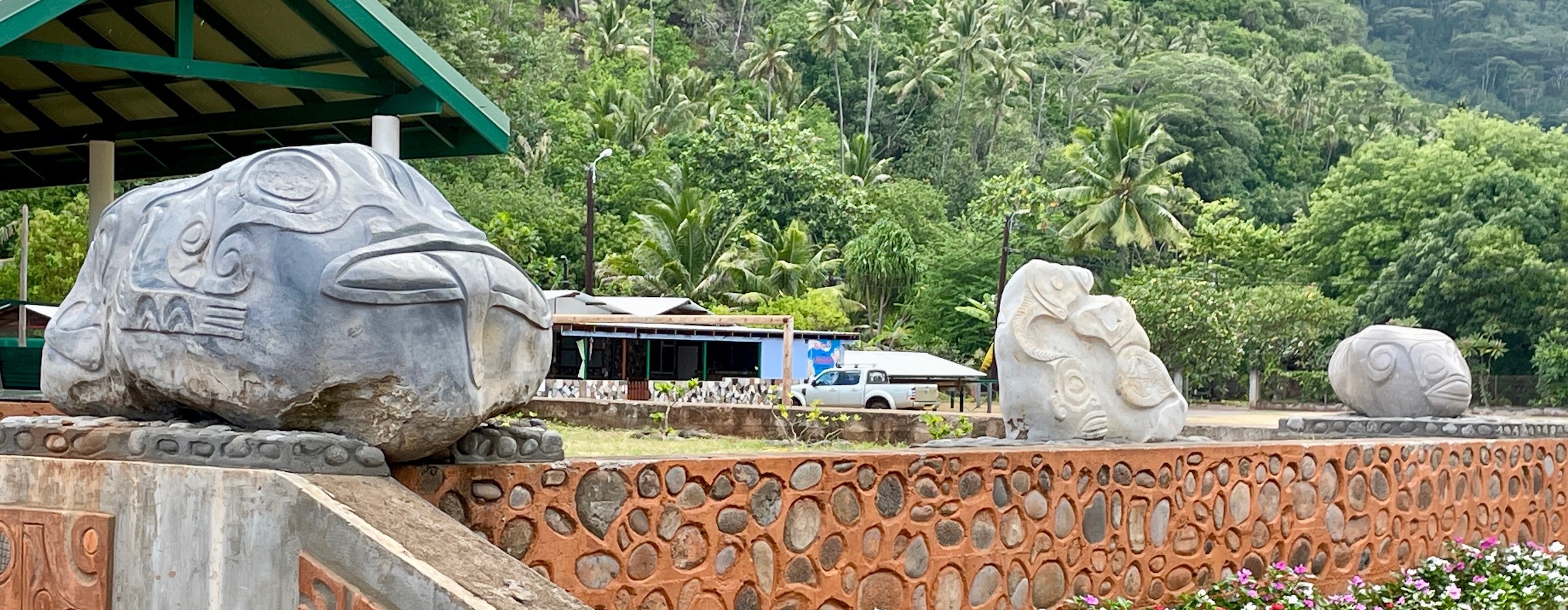
There is also this wonderful wood carving which for me was the perfect foreground for this shot of the Aranui 5 at anchor in Omoa Bay. If there was one photo I had to choose from the hundreds I took as the one that most epitomizes this Adventures Abroad trip it would be this one.
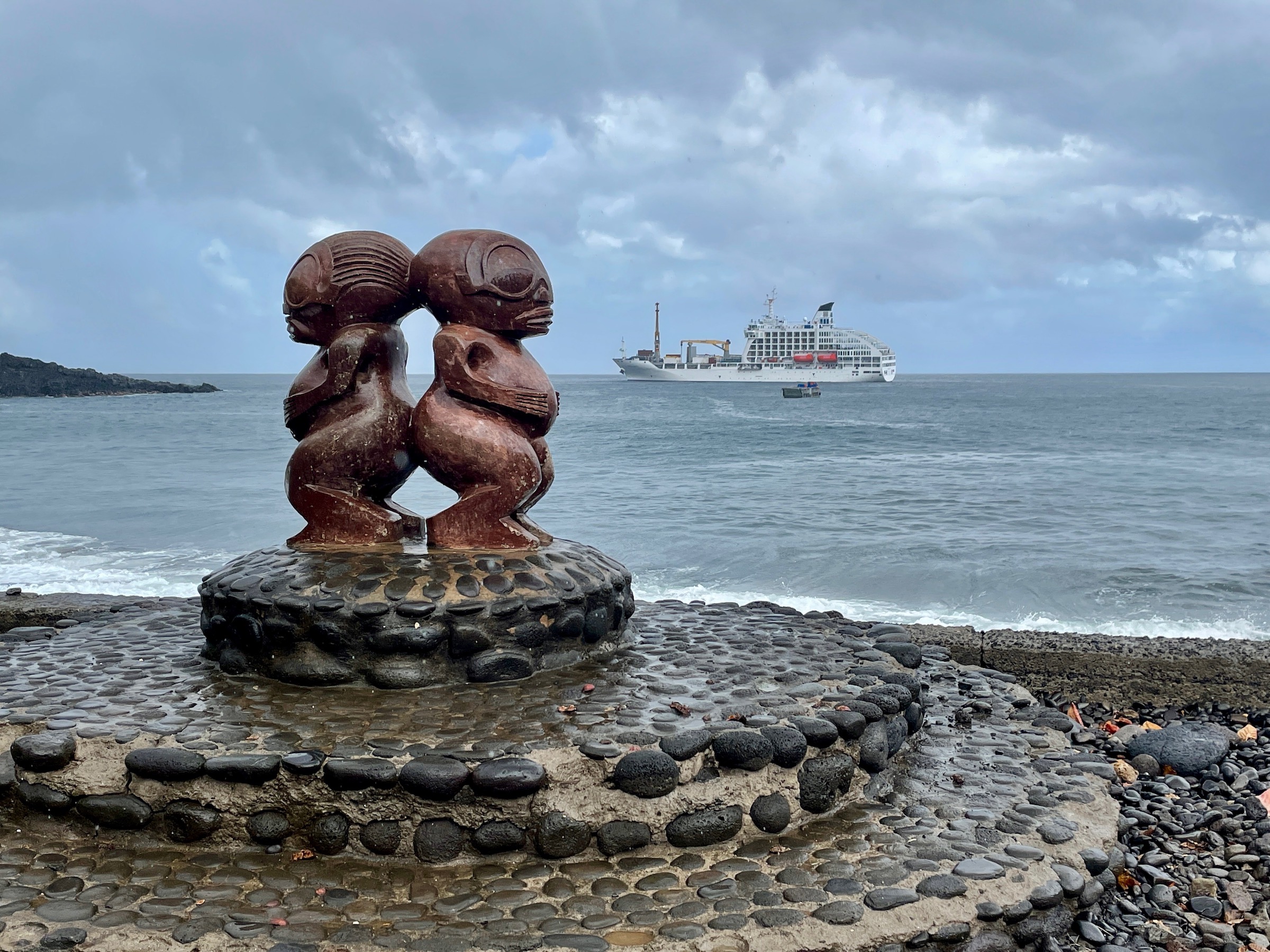
It was only a short walk to the cultural centre and small museum where we would see how tapas are made, passing French election posters along the way.
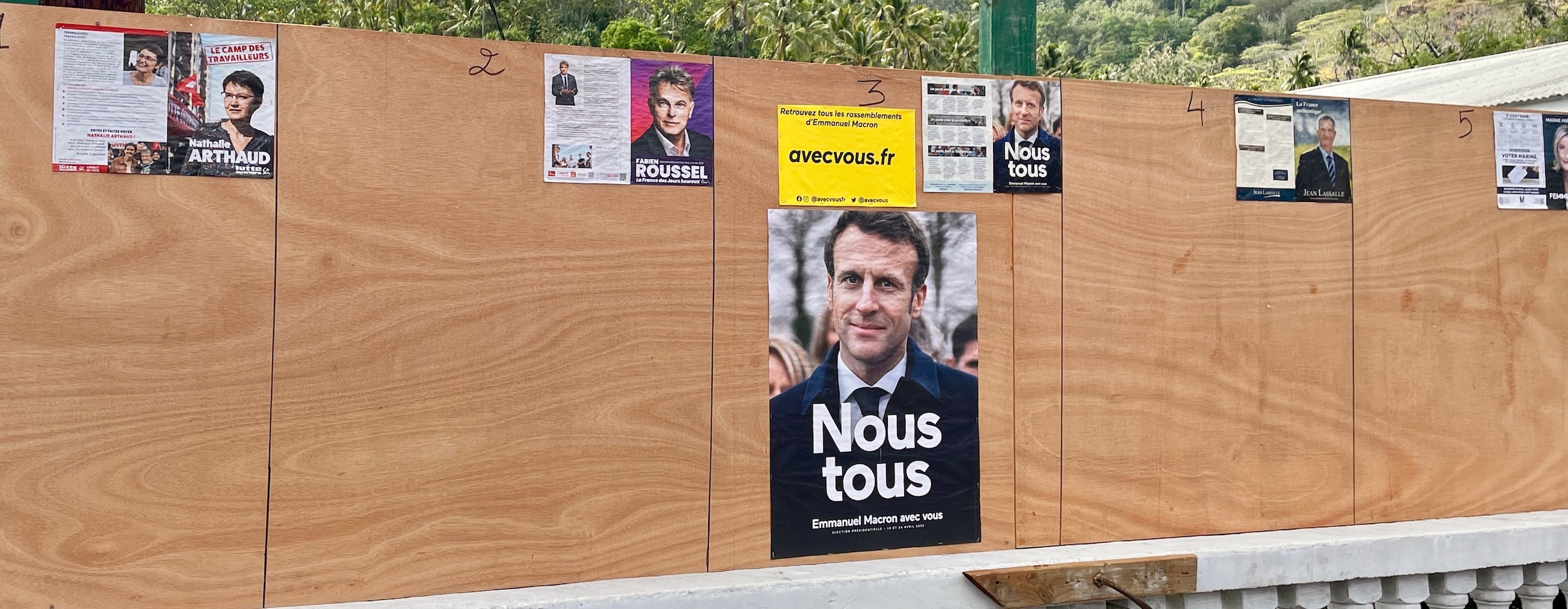
And this sleeping hog.
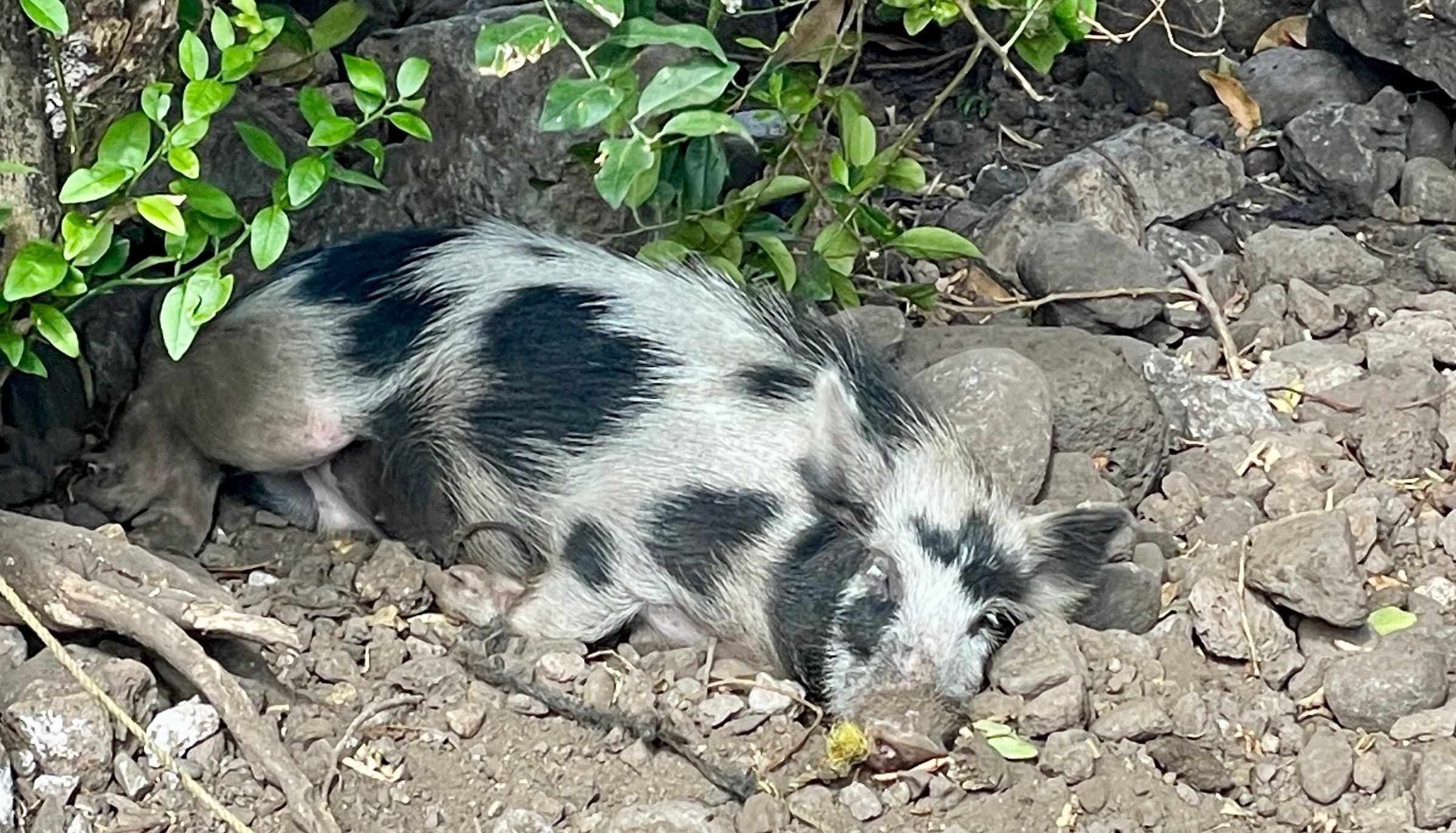
Now to be honest, watching someone making crafts is not really my cup of tea so I confess to wandering off after a few minutes. I stayed long enough to know that making usable paper from the bark of a banyan or mulberry tree is a time consuming and labour intensive process.
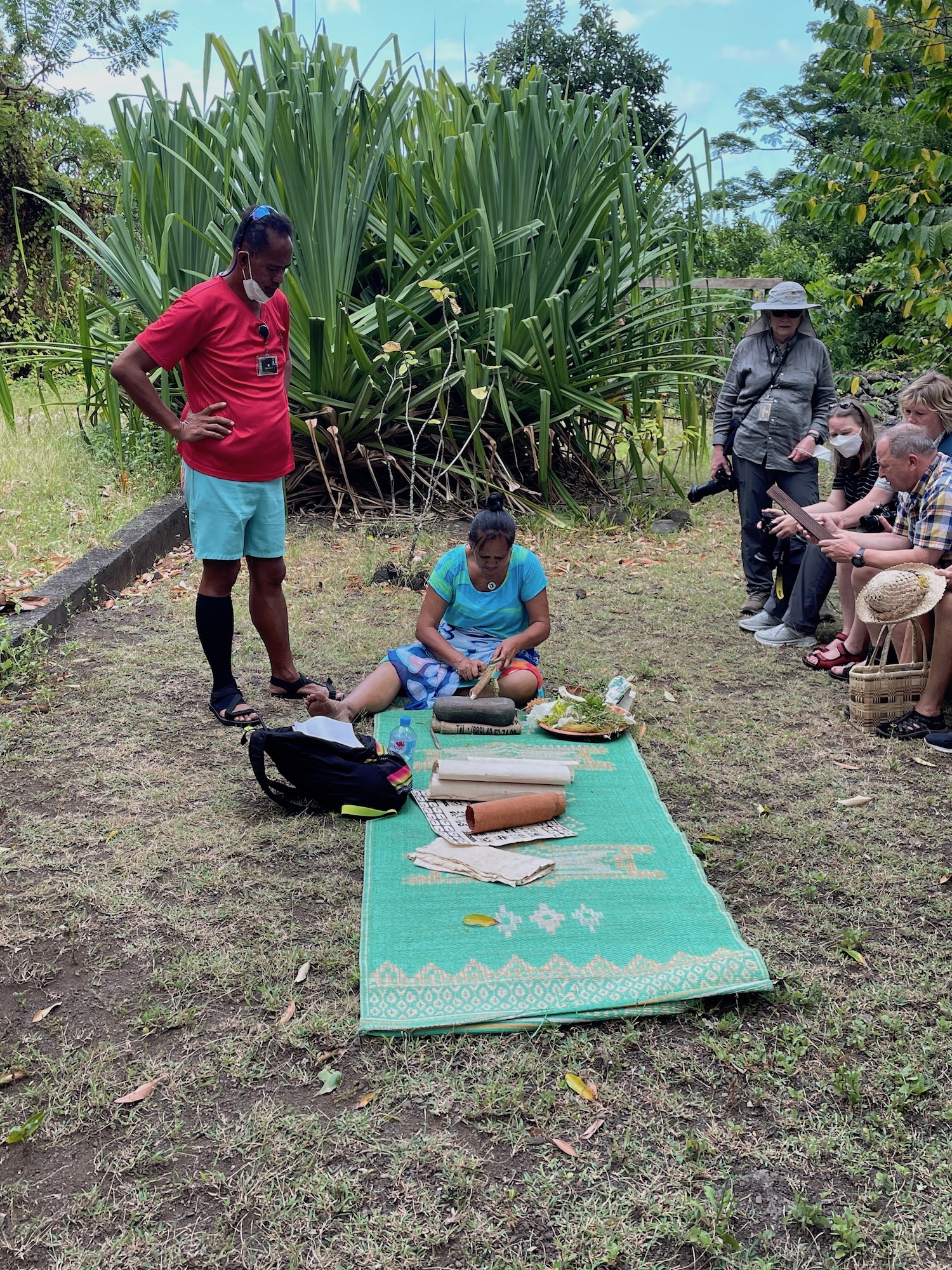
I was however quite interested in the finished products which a number of vendors were offering in the large craft market nearby.
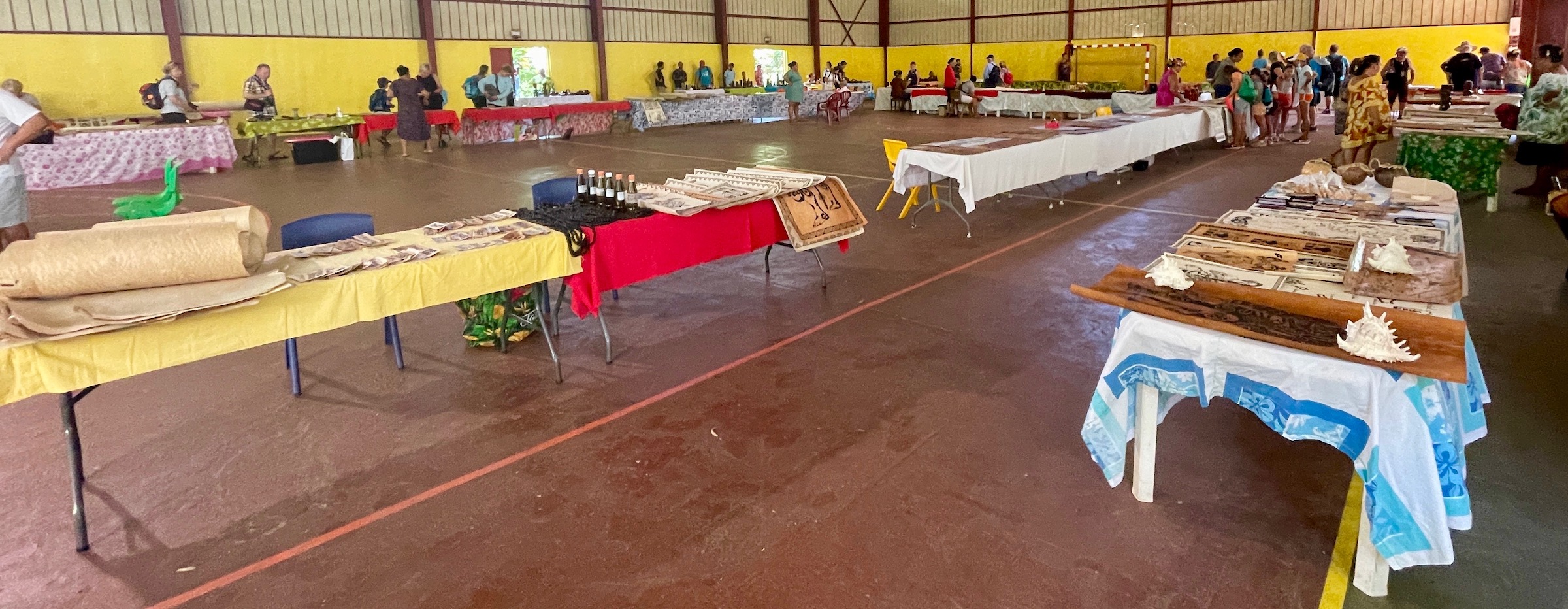
The tapas offered here are true works of art with designs mostly related to the abundant sea life surrounding Fatu Hiva. The vendors do a good business with the Aranui 5 passengers.
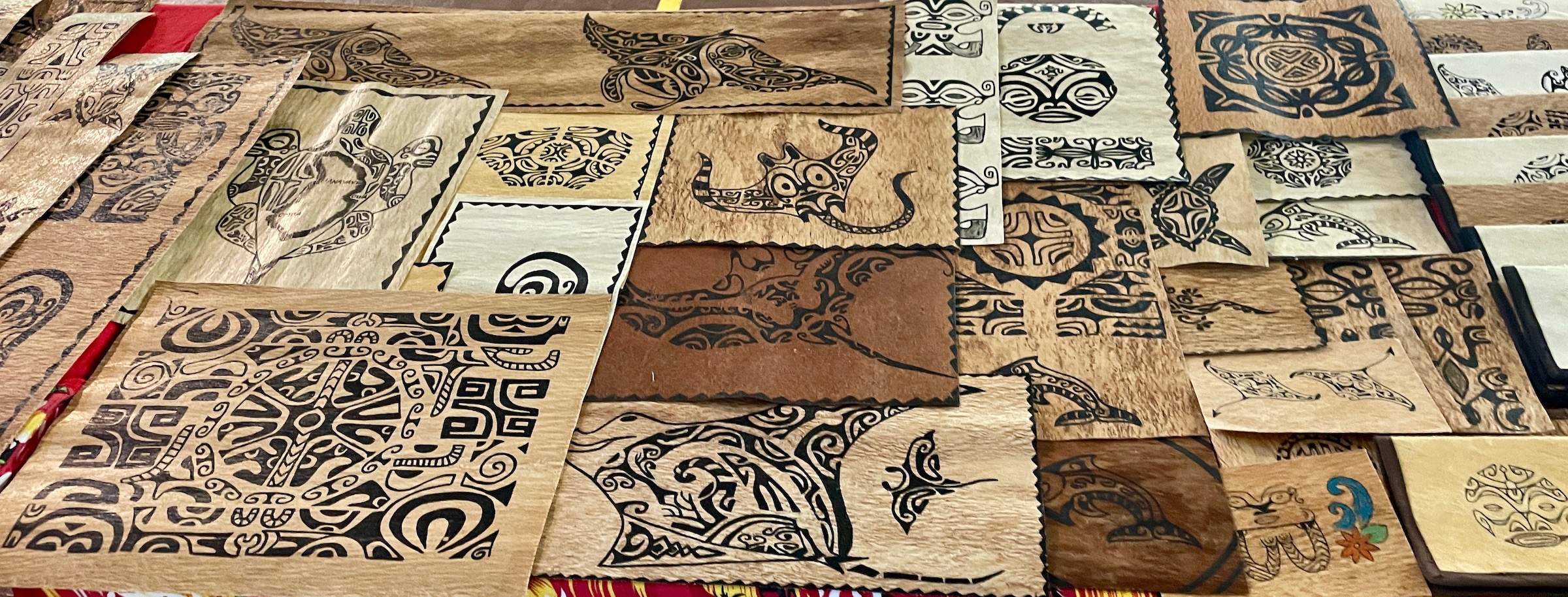
Now it is decision time on the hike from Omoa to Hanavave. I am surprised at the number of people signed up for it including families with young children. I had previously looked it up in AllTrails.com and it is listed as challenging with an elevation change of over 800 metres (2646 feet). What eventually decided me against going was the fact that although the trail, which is actually the road between Omoa and Hanavave, starts and ends on pavement, most of it is not. I can see that it will be raining at the higher altitudes and things could well be a slimy mess.
So the less intrepid of us or perhaps the saner, wish the hikers good luck and we head back to the Aranui 5. We weigh anchor for the short trip to Hanavave with this rainbow promising clear sailing.
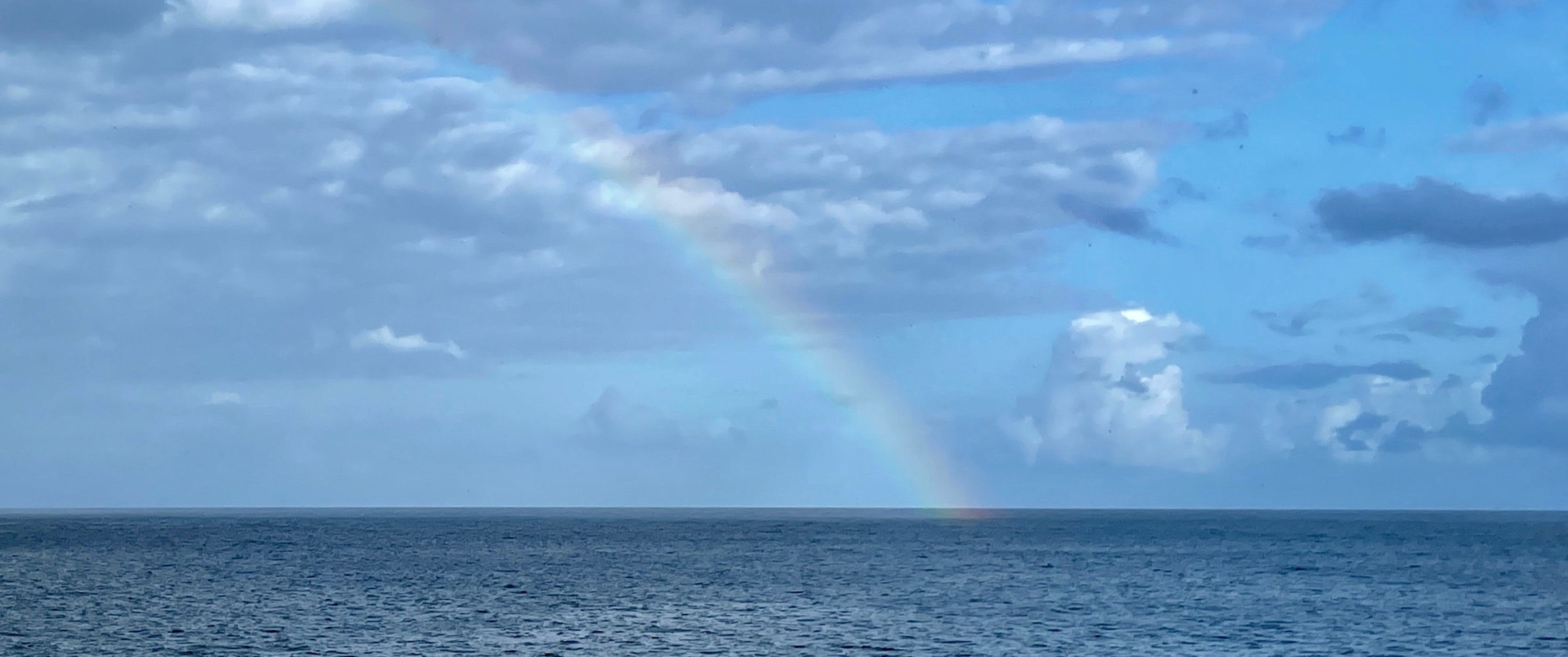
Hanavave – Second Village of Fatu Hiva
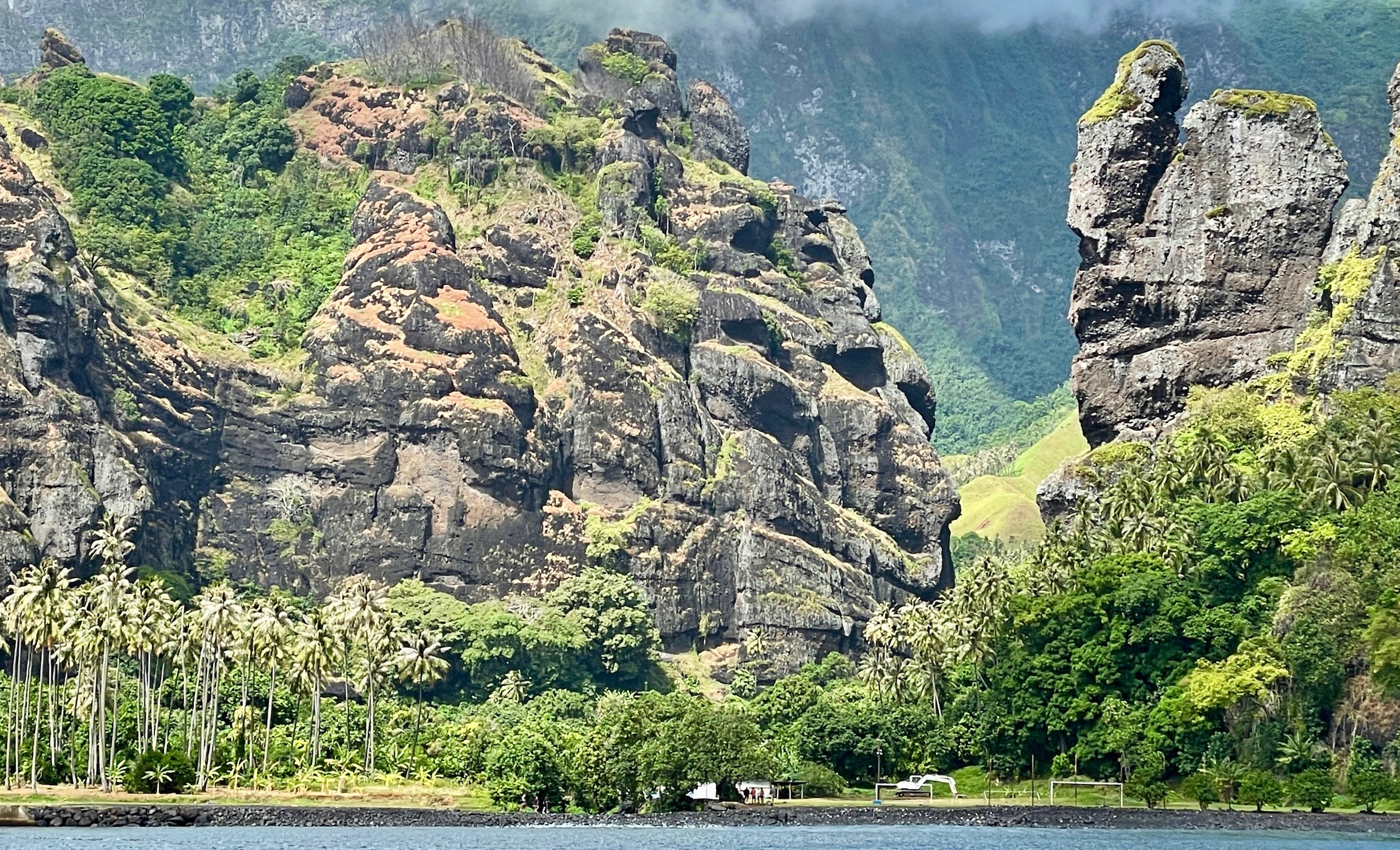
Just when I thought the scenery in the Marquesas could not get any better we arrived at Hanavave Bay, also known as the Bay of Virgins. According to Wikipedia the latter name comes from the basalt pinnacles on either side of the bay that do resemble a penis, but I don’t buy the connection. More plausibly, another source says the Europeans initially called it the Bay of Penises, but the prudish missionaries changed it to the Bay of Virgins.
No matter what it is called Hanavave Bay is simply stunning and one of the holy grails for itinerant sailors.
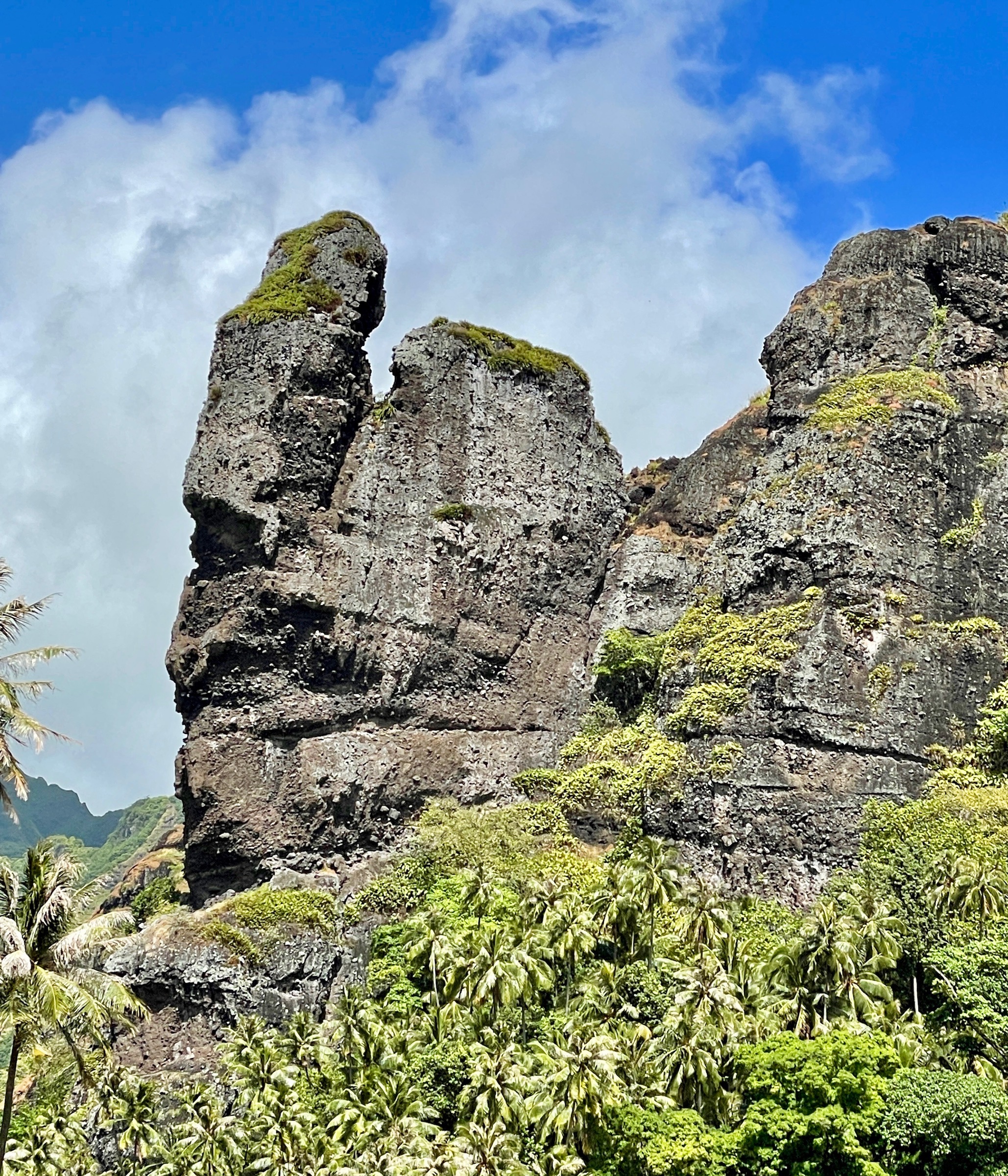
These are the basalt pinnacles on the left entrance to the very narrow bay. They reminded me more of giant Easter Island like moias and I could see how some people might think they were man made.
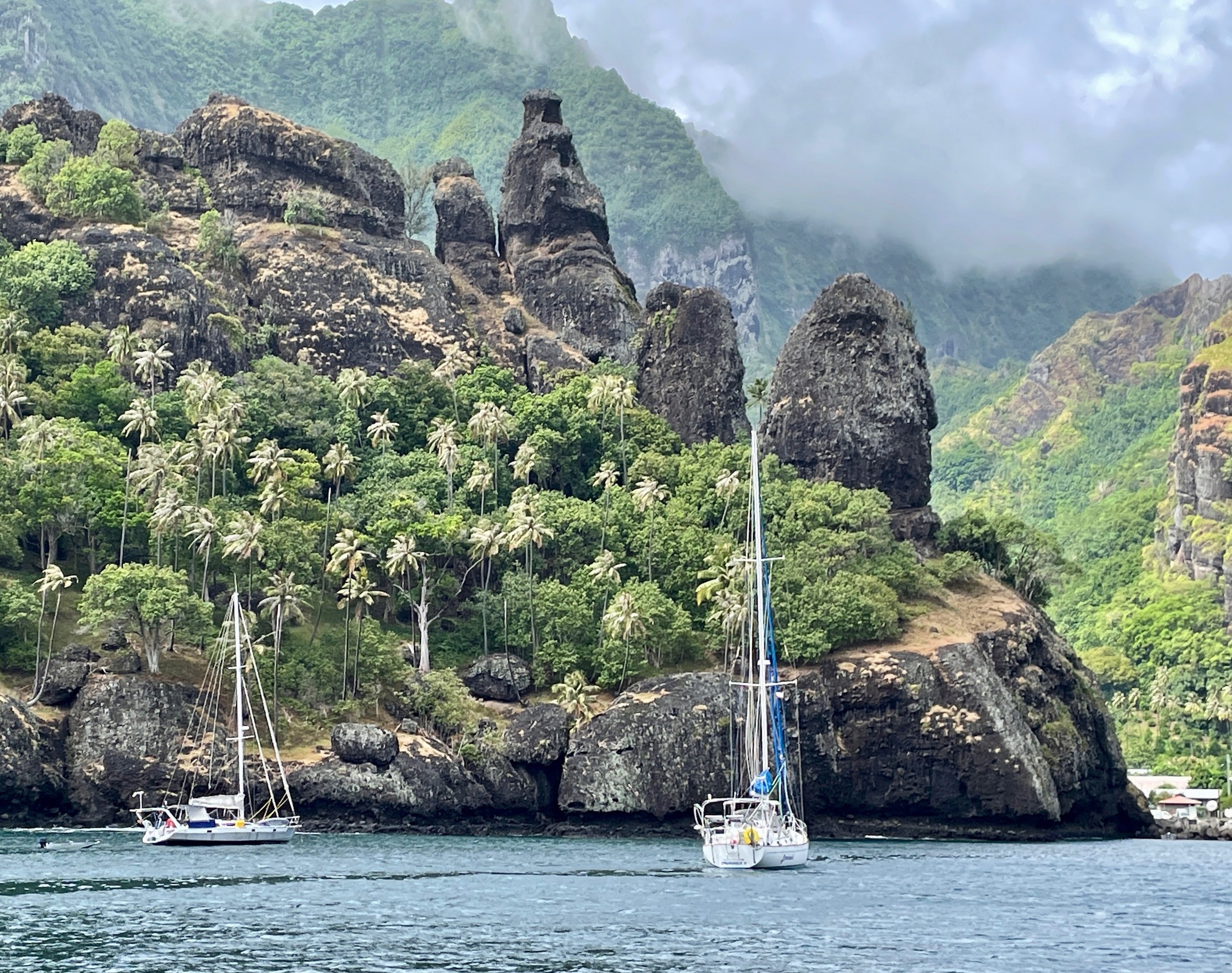
The barge takes us ashore and there’s really not much to do other than wander around and stare in awe at the incredible beauty of Fatu Hiva.
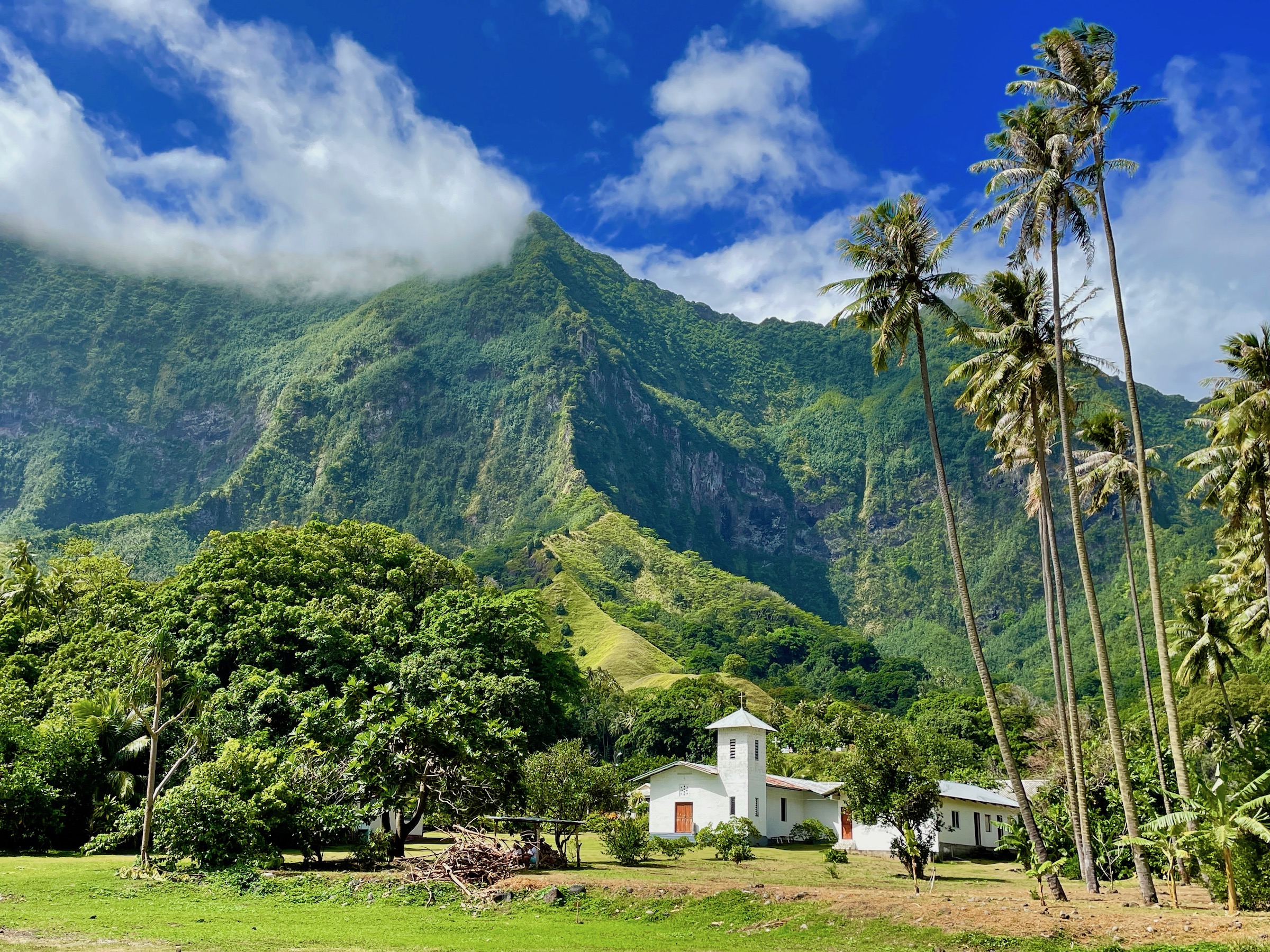
The road from Omoa comes through this narrow canyon and I start to notice that a lot of the hikers are already here. Most of them are covered in mud and soaked. Don’t let the blue sky in this picture fool you, it was socked in at the higher altitude and pouring rain. The hikers were accompanied by some four wheel drive vehicles and the majority of hikers called it quits and took a ride to Hanavave. A few brave souls did make it all the way, but not many. My advice for anyone doing this trip in the future is to think long and hard before undertaking what turned out to be a grueling hike on this particular day. However, the upside is that you can start out walking and get a ride if you get tired.
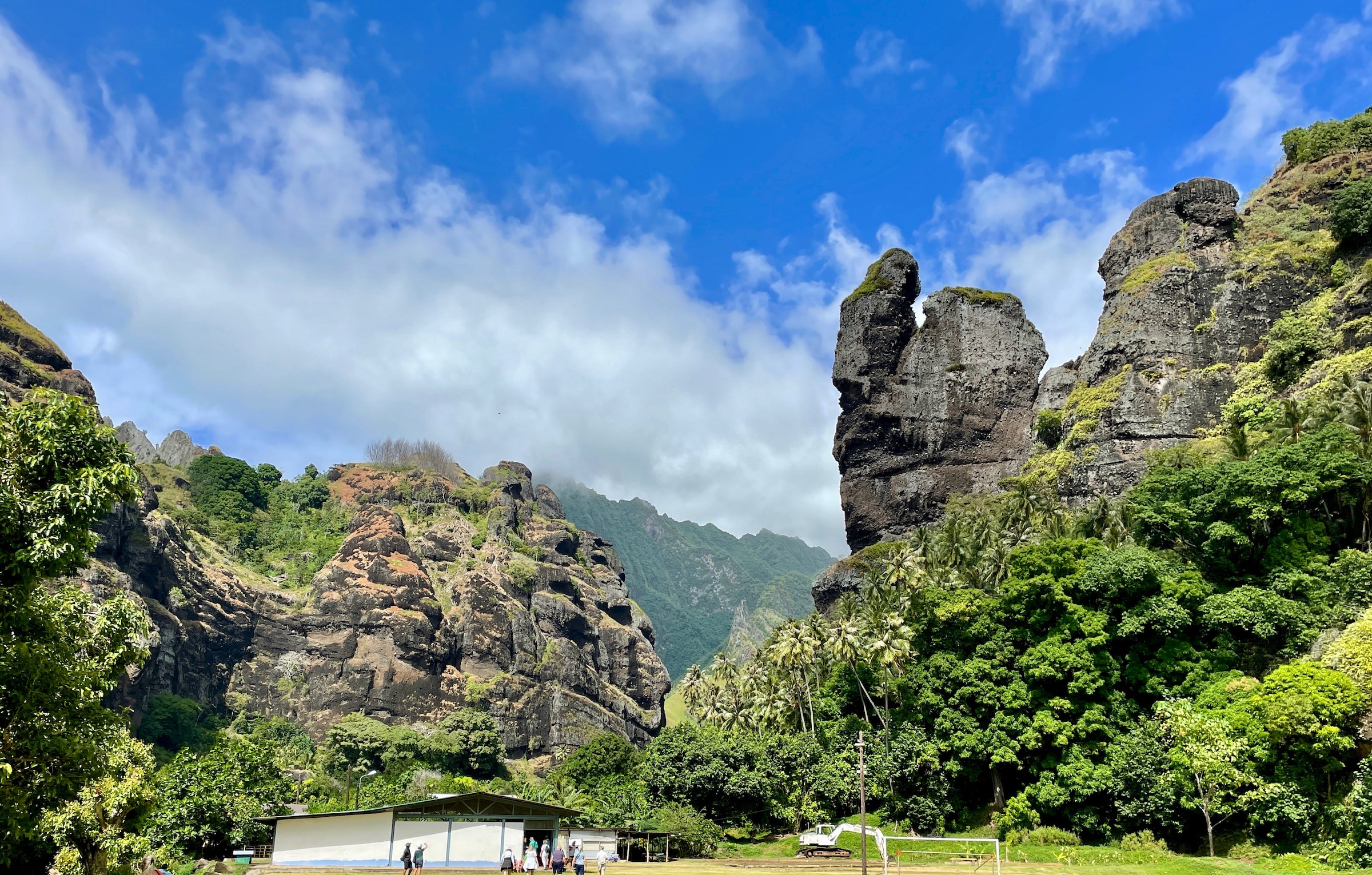
It was hard to believe as we reboarded the ship that this was our last stop in the Marquesas. I doubt that I’ll ever get a chance to return, but will never forget the last look at Fatu Hiva as we headed for the open seas and the long journey back to the Tuomotu archipelago.
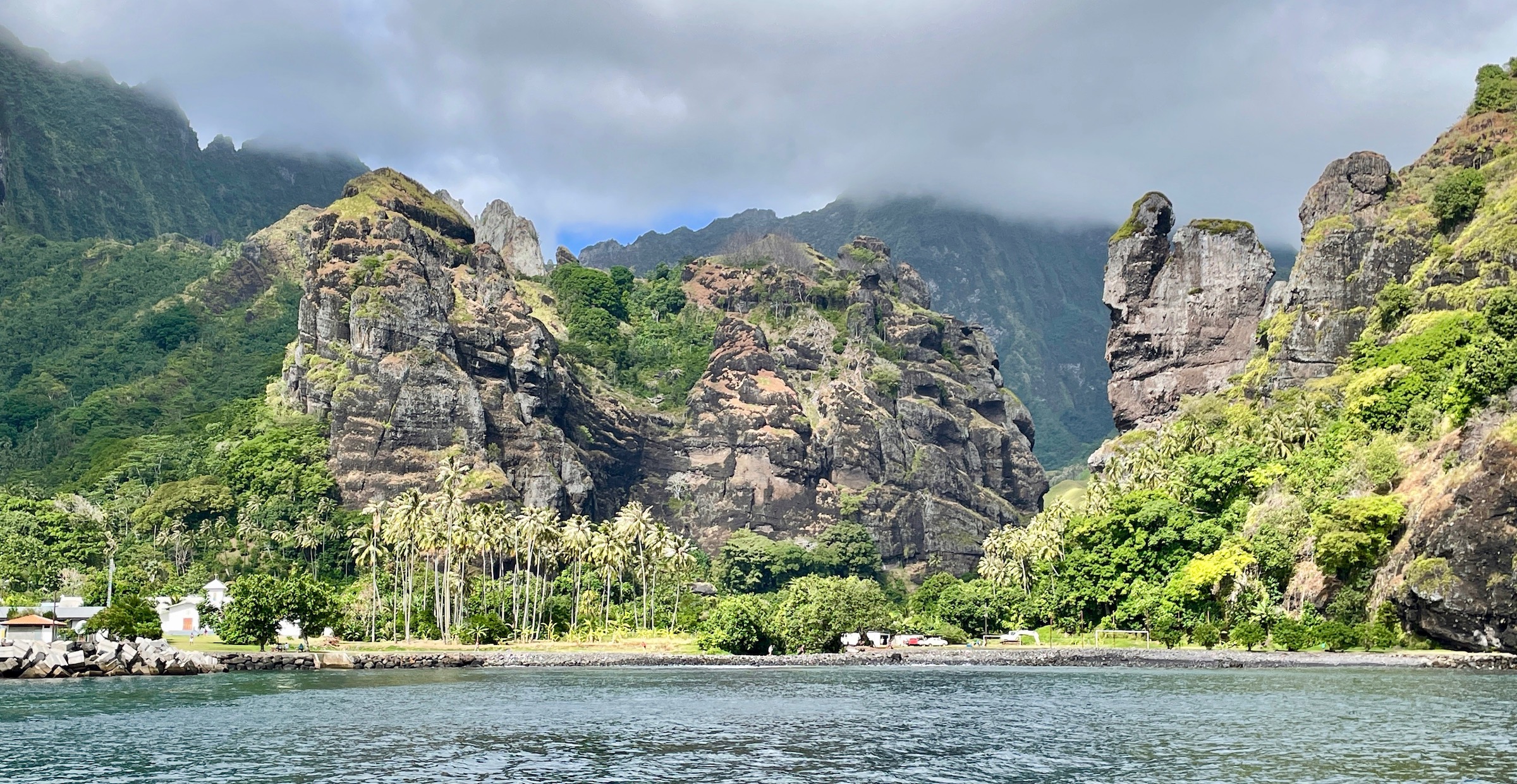
Our next stop is on the atoll of Rangiroa where we will get a chance to do some swimming and visit a black pearl farm. Hope to see you there.

